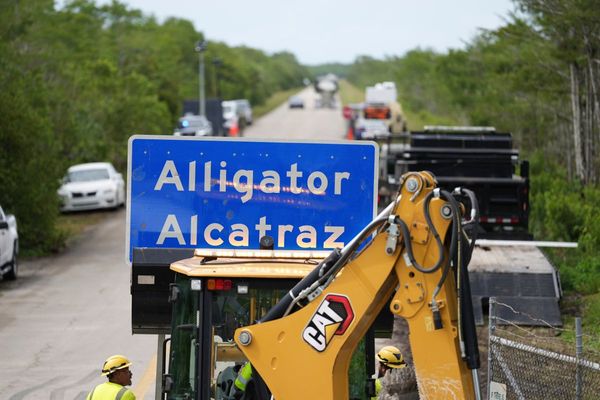
Mayoral challenger Paul Vallas on Tuesday unveiled what he called a “second Burnham plan” to reverse Chicago’s population losses, rebuild “long-neglected” South and West Side neighborhoods and, ultimately, reduce violent crime.
“It is critical in this moment that we do not divert our attention from the real issue at the heart of so many of Chicago’s problems: the pervasive, historical neglect of Chicago’s most underserved communities, most particularly on the South and West Sides,” Vallas told the City Club of Chicago.
“Policing will always address the symptoms, but never the root causes for crime in historically underserved communities. We must remember that crime is a whole city problem that calls for a whole government solution. I therefore call for a second Burnham plan, whose objective is to lift these very long-neglected communities into thriving, self-sustaining, locally-owned commercial enterprises coupled with the collective institutions necessary for a state of well-being for all who live in those communities.”
Heeding Burnham’s call to “make no little plans” that “have no magic to stir men’s blood,” Vallas wants to:
• Put Chicago’s “money where its mouth is” by requiring that one-third of all new revenues generated by Chicago’s temporary and permanent casino, sports betting, developer fees, tax-increment-financing districts and TIF surpluses be invested in South and West side neighborhoods. Those neighborhoods have “received little financial help” and they have been victimized by “predatory lending practices going back decades,” Vallas said.
• Create a Community Development Authority freed from the shackles of, what he called “City Hall politics” and aldermanic privilege. That is the unwritten rule that gives City Council members control over zoning in their wards. The new independent authority would be patterned after the Chicago Neighborhood Initiative that has worked to revitalize the Far South Side’s Pullman community.
• Establish a so-called Fair Investment Trust to both “hold and re-invest public and private money for second and third-generation investment” and create a citywide “Municipal Bank” like the one championed by former Ald. Ameya Pawar (47th) and community activist-turned-mayoral challenger Ja’Mal Green. The Bank of Chicago would hold Community Development Authority Funds and make “community purpose loans” at interest rates lower than borrowers could secure from private banks. It would “improve the city’s balance sheet” because a municipal bank would “capture the profit that private banks keep for themselves,” then use those profits for even more neighborhood loans, Vallas said.
• Create a City Land Trust to acquire shuttered industrial sites, moribund business corridors and vacant property and turn that non-productive land into “locally-owned,” revenue-generating assets. Vallas envisions the new trust with powers far beyond the Chicago Housing Trust. It would “award long-term property tax abatements,” issue TIF bonds and use the proceeds along with the city’s sweeping power of eminent domain to “secure all vacant residential buildings and vacant lots” so they can be “turned over to local developers and community organizations to create affordable housing.” City Hall could help with “equity grants and loans.” The same approach would be used to revive “decaying retail corridors and long-vacant industrial sites.” TIF bond proceeds could bankroll environmental clean-up to ready sites for development. The goal would be to transfer ownership in return for an “equity share.”
• Launch an “Adult Education and Occupational Training Network” to identify and coordinate the patchwork of organizations currently targeting disconnected youth, high-school drop-outs, chronically-unemployed Chicagoans and ex-offenders.
• Require all “major community economic development” to first take into account the “cumulative environmental impact.” Neighborhood projects would be approved only if funding is dedicated to increase open space, shrink or eliminate food deserts, confront opioid and other drug addictions and promote mental health, reproductive health and family health.
To some, Vallas’ grand plan may sound a bit like a glorified and enlarged version of Mayor Lori Lightfoot’s signature Invest South/West plan. That program uses $750 million in re-programmed government funds to rebuild 10 long-neglected neighborhood commercial corridors and serve as a catalyst for private investment.
Vallas said it couldn’t be more different.
In fact, he condemned Lightfoot’s approach as little more than “21st century branding of a failed 20th century approach” — a “top-down, transactionally-oriented, politically fashioned aspiration that remains undelivered.” That would be the case, he added, “even if it were properly prioritized and implemented, which it is not.”
In response to a question from the audience, Vallas also vowed to turn the City Council into the co-equal branch of government it was meant to be by empowering alderpersons with a local version of the Congressional Budget Office.







